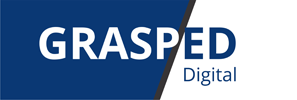Hot words like “recognizability” and “targeted messaging” can seem detached from actual work on the ground. Here are some examples of successful omnichannel marketing strategies and how they affected customer experience.
Starbucks
The coffee giant’s three main channels are its brick-and-mortar stores, its website, and its smartphone app.
The Starbucks app issues a free digital rewards card upon download. Users can then log onto their account on any platform (app, desktop web browser, mobile web browser), and the points on their card are updated in real-time.
This alone is nothing special, but by using a combination of aggregate data and consumer insights, Starbucks was able to create a feature that allowed people to skip long lines during the morning rush by ordering and paying ahead using the app.
This feature is a great example of accompanying a consumer across digital and physical platforms to deliver value beyond the product being sold, in this case, a coffee.
Disney
This entertainment multinational conglomerate is understandably spread across almost every conceivable platform there is.
They’ve got multiple websites, apps, in-person touchpoints, and television channels. But the magic of their omnichannel strategy is their My Disney Experience App.
The app syncs to a DisneyWorld ticket to help the user create a personalized itinerary, and provides helpful information on attractions that are updated in real-time.
It reduces the amount of decision-making visitors have to do by providing custom recommendations, and reduces pain points like long waiting times by advising visitors on which attractions have the shortest line.
Disney also uses the app to simplify access around DisneyWorld.
Instead of physical tickets that are high-touch and easily lost, the My Disney Experience App offers a complimentary contactless feature called MagicMobile that allows visitors to tap into attractions using their smartphone.
Visitors can also purchase a wristband that connects to their DisneyWorld account and accomplishes the same thing as the MagicMobile.
As you can see, the app enhances the customer experience of DisneyWorld by providing functional benefits like avoiding the hassle, saving time, and simplifying ticketing.
Singapore Airlines
The airline, which has long been noted for its innovative culture, uses email, a mobile app, a website, and in-person touchpoints like the inflight entertainment system, their airport staff, and aircrew.
Like Starbucks and Disney, users can access their Singapore Airlines account on any channel and everything is updated in real-time. In the app, users can book flights, check a flight’s status, book their in-flight meal ahead of time, and sync their account to the in-flight entertainment system to save watch data.
In addition to the app, Singapore Airlines uses email and mobile push notifications to recommend things like restaurants and travel destinations whenever users travel with them.
The app and the extra effort to provide value beyond the flight reduce the stress of traveling and improves customer experience.

